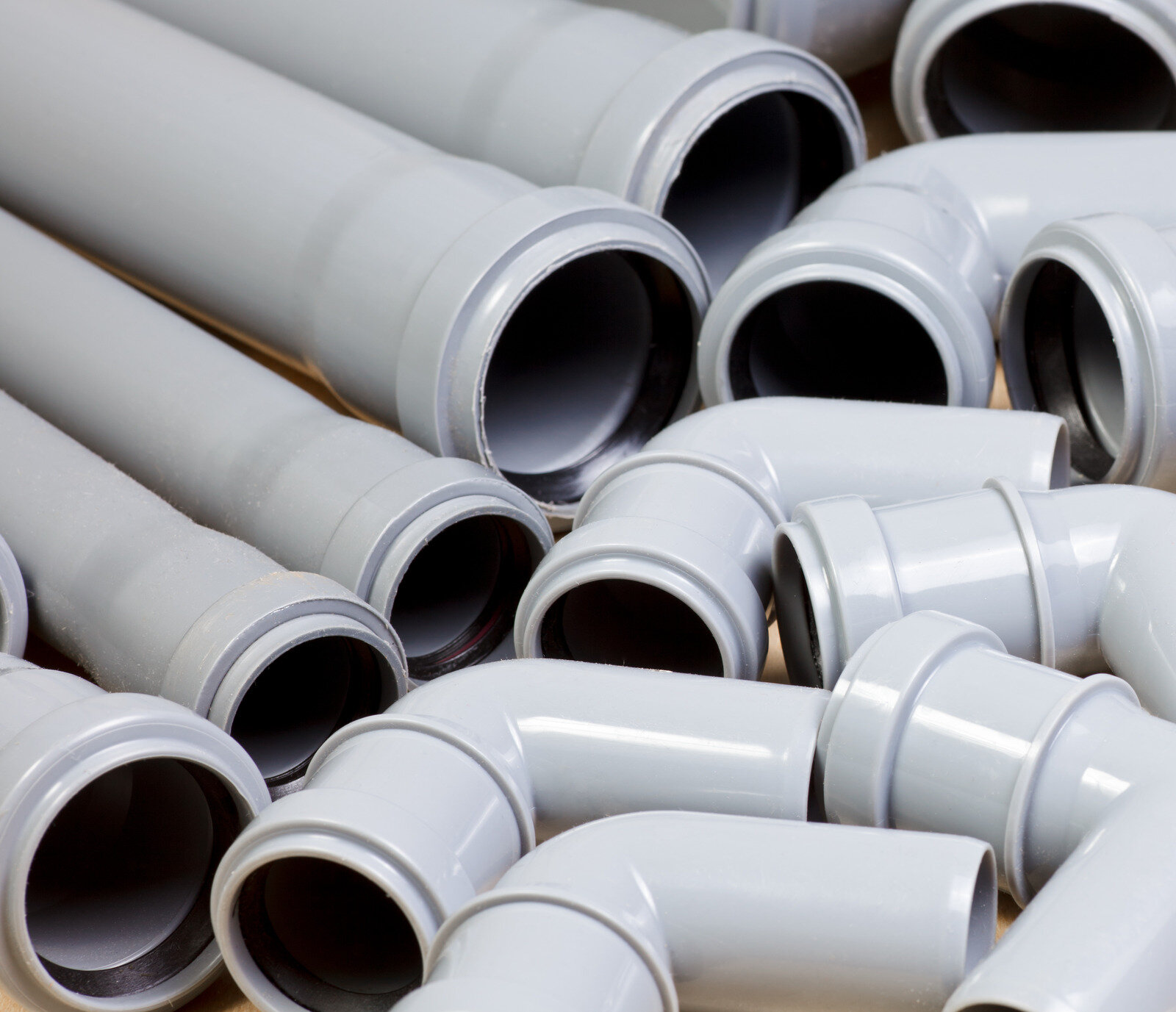A Big Sewer Line Repair or Replacement Could Be Around The Corner
When you move into an older house, you can sometimes be up against lots of repairs. But, very often, one issue might lay undetected beneath the surface.
If your sewer drain pipe needs to be repaired or replaced, you might not notice it right away.
Sewer Backups
Have you ever flushed and had water flow out from the bottom of the toilet? Or, taken a shower and noticed that the water wasn’t draining?
An issue in one drain doesn’t necessarily indicate that you have a main line problem. However, if water is backing up in drains throughout the home, you should have a plumber check out the main sewer line.
Repeated blockages may indicate that your pipes have structural damage. If the drain pipes have sagged because the ground has shifted over time, waste could get caught in the bend. Sending a camera down the pipe is the best way to pinpoint the problem.
Strange Sounds
Gurgling or bubbling sounds coming from your drains could indicate that your main sewer line is clogged or blocked.
These sounds usually happen when the venting system for the gas within the sewer line is blocked. The gas escapes through your home instead. This often produces a foul smell.
When the sewer line is damaged, the sounds that come from your plumbing could leave you perplexed. Your toilet might bubble when you take a shower. Water might slosh up your shower drain when you flush the toilet.
Bad Odors
Even if you don’t notice water seeping up the drains, you might smell foul odors coming from your sinks, toilets or bathtubs. That’s also an indication that you have a sewer line repair issue.
Any odor that smells like sulfur or rotten eggs is usually indicative of a sewer problem. A working sewer drain pipe should be airtight.
If your yard or home smells like sewage, you might want to call a plumber.
Soggy Lawn
Your sewer pipe removes the dirty water from your home and sends it on its way to the sewage treatment plant. The entire pipe should be enclosed. If it’s damaged, water can leak out. Because the main drain line probably runs underneath your lawn, water leaks from the pipe can cause soggy spots in your yard.
Structural Issues
If the sewer pipe is leaking water and waste below the ground, it could cause the foundation of your house to shift. Cracks in the foundation may indicate that you have an underground leak.
Pests Inside the Home
Do you have drain flies, rodents or other pests coming up through your drains? A crack in the main line could leave your home susceptible to infestation.
Drain flies lay eggs in drains and overflow pipes. Most are seen in the kitchen , but they are very common in cracked drain pipes. Since the feed off of fermented food, the can be a tell tale sigh of a pip in need of replacement.
Cockroaches can slip into cracks that are only as thick as a quarter. A plumber can check the condition of your sewer pipe to determine whether the pests are coming from a damaged line.
Mold
If the sewer lines behind your walls are damaged, water can can leak into your home. Moist areas will develop mold over time. A mold or mildew stain could be a sign of a pipe problem, especially if it’s accompanied by a foul odor.
What Causes a Damaged Sewer Drain Pipe?
Materials
Pipes don’t last forever. You need a drain pipe inspection if your home is 40 or 50 years old. Older pipes might need to be retrofitted and replaced.
PVC
PVC is the most common type of pipe material. The white or beige plastic is resistant to the elements and seems more durable than other materials.
CPVC (chlorinated polyvinyl chloride), a type of PVC piping, is probably the easiest to repair. CPVC is a high-temperature plastic pressure piping system that was brought to market for residential plumbing back in 1959. CPVC is also used in fire sprinkler systems due to its rugged and heat resistant make-up.
ABS
Today, most main sewage drainage lines are made of ABS (acrylonitrile butadiene styrene) or PVC (polyvinyl chloride.) In older homes, however, waste pipes may be made of iron, copper or steel.
ABS was used for pipes in the mid-1970s. Although ABS doesn’t corrode, it’s not the sturdiest material. It wears down over time and is not very durable. Faulty ABS piping from the 1980s is still causing problems in homes today.
If you notice that your pipes are black, they may be made of ABS. People who own houses that were built between 1985 and 1993 should be especially vigilant about cracks in their pipes.
Cast Iron
Cast iron, a popular choice for older drain pipes, is strong. However, it’s likely to rust and corrode over the years. The rust and corrosion will eventually eat through the pipes, leading to cracks and leakage.
Although there are certain conditions that can speed deterioration, most cast iron pipes will last about 50-60 years.
Steel
Galvanized steel pipes are common in homes built between 1930 and 1990. Steel doesn’t usually last more than 50 years, so if your house has steel pipes, you may need to keep an eye out for signs of failure.
Once the zinc plated coating on the galvanized steel pipe begins to wear, rust and corrosion will set in. The rust will eventually begin the block the material flowing through the drain, causing back ups and eventually cracks.
Pipe Damage
If your pipe has a small crack or hole in it, the lesion could grow over time. Here are several damage causing elements to be aware of:
Tree roots can grow into the pipes and force the cracks to expand, causing leaks and blockages
Irresponsible disposal of household items
Pouring grease or large food particles down the drain
Flushing items that aren’t supposed to go down the toilet
Shifting soil
Construction
Heavy machinery that’s running over your property can put pressure on the ground, causing the pipes to break.
Careless landscaping like digging near the main sewer line
What to Do If You Need Sewer Repair
You should have your sewage line snaked every three years. You shouldn’t go more than five years without snaking your exit pipes. Snaking can clear the main line of debris that could lead to clogs and sewage backups down the road.
If you notice a significant problem, such as sewage backup or foul odors, you should shut off the water from the main source. Don’t use your sinks or flush your toilets until you call a plumber. If you try to force more water out the main line, it could cause additional damage or more sewage to back up into your home.
A plumber can use a sewer inspection camera to get into the line. If the pipes need to be replaced, you might have to dig up your yard.
Homeowners Insurance
Your homeowners insurance might not include coverage for sewer line damage. However, you can get sewer line insurance by adding a rider to your policy. It could cover damage from old septic tanks or pipes.
Just make sure that sewer line insurance covers the costs and labor involved in locating and repairing the damage, including fusing, welding, pipe replacement and excavation.
Should You Repair or Replace Your Pipes?
You may not be able to decide whether to repair or replace your pipes without consulting with a professional first. Once you realize that you have a sewer leak, it has probably been there for a significant amount of time. Getting it inspected immediately will protect your home and property from further damage.
If you have cast iron pipes, you might as well replace them. Repairing cast iron only fixes the problem temporarily. You’re likely to have more issues come up as the areas on either side of the repair continue to corrode.
Sewer Line Replacement Cost
The average sewer line replacement cost is about $2500 for a main line. If the damage is extensive, you could pay up to $4,000. To replace a full sewer line, you could end up shelling out up to $25,000.
The price also depends on the structure of your house. The price may depend on whether your sewer line is in the basement or under a slab. The placement of the city’s connection point could also affect the cost.
A plumber might charge about $350 to use a sewer inspection camera. Additional costs to remove tree roots could put you out between $100 and $600.
Trenchless Sewer Line Replacement
It’s not usually very convenient to repair a busted drain line or replace your pipes. If you’re on a slab, you might not want to break through the load-bearing concrete. You may not want to dig up your entire yard.
To avoid a lot of the demo and replacement that goes in to drain pipe repair, there are now trenchless sewer repair options. Here are two of them.
Pipe Bursting
This repair involves literally bursting the original pipe with a machine, while simultaneously replacing it with a polyethylene (HDPE) pipe.
Cured In Place Pipe (CIPP)
This method of trenchless repair involves the restoration of the existing. Installing a CIPP lining seals the pipe and adds to its longevity. An epoxy and resin mixture is inserted in to the old pipe, followed by the liner. Once the liner is in place, and the epoxy mixture sets., the pipe is cured with steam or hot water.

